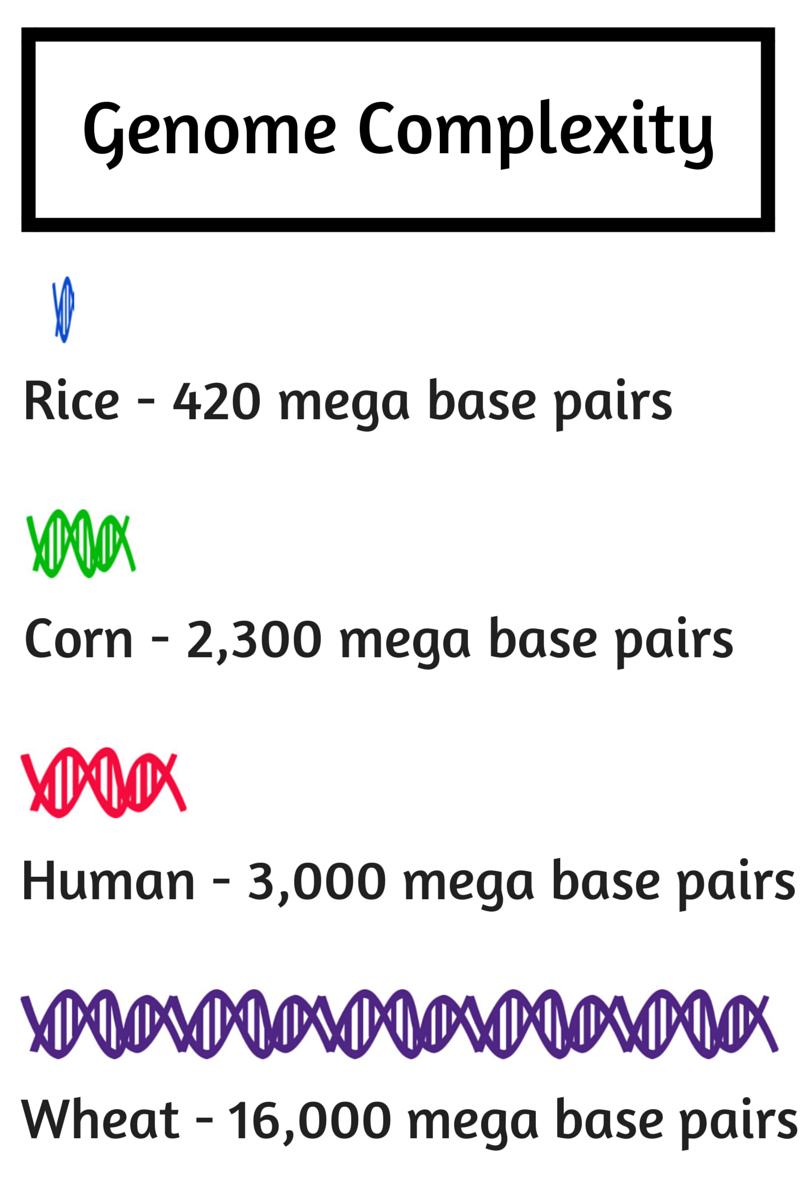Phase I Summary
The first phase of Miller’s research will identify the level of reactivity for human celiac disease in four categories: currently planted Kansas wheat varieties, historically popular wheat varieties dating back to the early 1900s, new experimental wheat lines and wild wheat relatives. Miller will test around 300 different samples.
Phase II
The expertise of Dr. Chris Miller, the director of wheat quality research for Heartland Plant Innovations, is pretty specific. And, at the end of just two years of research, that could mean wheat researchers have a complete genetic map of the exact DNA sequences in wheat that cause human celiac disease.
The first phase of Dr. Miller’s research will identify which Kansas wheat varieties have the lowest, and highest, levels of reactions for human celiac disease, which causes damage to the lining of the small intestine and prevents the uptake of nutrients. This will allow breeders to screen and target wheat varieties that have a naturally occurring lower level of reaction for human celiac disease.
The next step to creating a truly celiac-safe wheat, however, is to identify and analyze every wheat protein and every epitope — a fragment of a protein — that could cause a reaction.
That is exactly what Miller hopes to achieve in the second phase of his research project funded by Kansas wheat farmers through the Kansas Wheat Commission.
Complex, But Not Impossible

Each of these proteins, or their fragments, matches a specific antibody produced by the human immune system. These antibodies, built up over time, identify a specific protein target and bind to it in order to fend off the body from attack. In other words, the recognition of a specific human celiac antibody to its specifically matched wheat protein causes the celiac disease reaction.
Each person’s immune system has different antibodies, however, which means Miller must identify any wheat protein fragment that could potentially react to any one person’s antibodies and create a celiac reaction.
“It is not impossible, but it is complex,” Miller said. “It is really hard work.”
Magnetics and Microscopes
To find the exact epitopes, or protein fragments, that react to human celiac disease antibodies, Miller will use a process called immunoprecipitation. In this process, a single antibody is adhered to the surface of a microscopic magnetic bead. The miniature magnets are then fixed to a surface — like hundreds of super tiny magnets stuck to a fridge.
Then, the proteins from a single wheat sample are washed over the surface. The reactive proteins stick, the others simply wash away.
To identify just the reactive fragments, Miller will use the same technique with pure proteins, digested, or broken down, into their respective pieces and parts.
From there, Miller can work together with other wheat researchers to isolate and sequence the reactive cereal proteins, using a technique Miller developed. These protein sequences will provide wheat researchers with targets to sequence specific genes and provide a complete picture of reactivity to human celiac disease.
Where the first phase of Miller’s research tested hundreds of samples, this second phase will be able to fully analyze only a single cultivar.
Not Gluten-Free, But Celiac-Safe
At the end of his two year project, Miller will have provided wheat researchers with all the information needed to eliminate all of the proteins known to cause a human celiac reaction.
To find a fully celiac-safe wheat variety, however, scientists will need to combine selective breeding and non-GMO biotechnology.
The goal, according to Miller, is to eliminate the worst of the reactive proteins through breeding. By selecting wheat varieties that have a naturally occurring low level of reaction to human celiac disease, wheat breeders can weed out the worst of the reactive proteins. However, eliminating all of the potentially reactive sequences requires extra work.
Gene editing is a non-GMO scientific technique through which plant scientists can render specific amino acids, the building blocks of proteins, as either non-digestive or non-allergenic. This means they can pass through the human body without detection by human celiac disease antibodies. Without this recognition, there is no reaction, which means no celiac symptoms. The resulting wheat would not be gluten-free, but it would be celiac-safe.
But How Will It Taste?
For many traits, the wheat genome has very similar or even identical genetic sequences. Miller explained that through gene editing, scientists may be able to replace reactive sequences with very similar, but non-reactive ones. That means the wheat could be celiac-safe and still maintain the gluten needed to bake a great loaf of bread. Only time will tell exact results.
Kansas Proud
No other research into human celiac disease is taking this approach. Existing projects and funding focus on the symptom — a celiac reaction — but Miller’s work tackles the exact genetic cause. At the end of his two-year project, Miller will have created the most comprehensive study of wheat proteins related to celiac disease ever published.
Kansas wheat farmers are the only group supporting research into the identifying the exact DNA that causes a celiac reaction as well as the levels of reactivity in wheat varieties. The results, however, would be life-changing for the three million Americans with celiac disease.
As Miller said, “This is a huge contribution to science — not just to Kansas, but to all of human health.”
by Julia Debes
